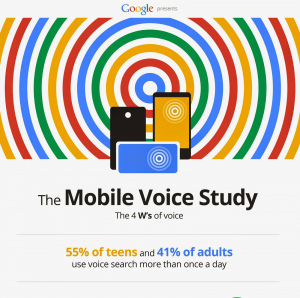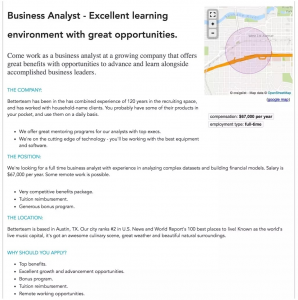IAB is striving to establish common standards and APIs for a no-tracking advertising eco-system, but the industry is pulling in different directions.
NEW YORK — Addressability and privacy present nothing less than “existential challenges” to the advertising industry, said Anthony Katsur, CEO of IAB Tech Lab, on the Annual Leadership Meeting stage this week. Add this to CEO David Cohen’s calls for “burning impatience,” and the threat to $ 8 to $ 10 billion of ecosystem revenue by 2025, and we seem to have a five-alarm fire on our hands. “Sitting on the sidelines is probably at your peril,” said Cohen later in the day.
The twin threats to addressability
Cookie deprecation (which, as several speakers pointed out, has already happened across the web) and ever more stringent regulation dominated the day’s discussions. Cohen’s keynote condemnation of the “someone will figure it out for me” attitude was underlined by a lack of engagement from brand marketers. At one session, specifically focused on alternative identity solutions, most of the audience were adtech professionals. There were a handful of agency marketers and a couple of publishers. When the moderator asked brand marketers to identify themselves, not a hand was raised.
One audience member affirmed that marketers just don’t have the time or skill-sets to solve these problems themselves. First-party data, alternative identifiers, clean rooms, privacy-enhancing technologies (PETs) — some combination of those can surely be made to work by adtech, or the agencies, or the publishers. And then, of course, there’s Google and its Topics API.
Google doesn’t have all the answers
Topics is the replacement for FLoC, Google’s proposal to allow interest-based advertising to anonymized audiences. Topics is certainly easier to understand. It will assign a small number of interests to a user, changing every few weeks, enabling advertisers to target those users without knowing their identities. This does preserve cross-domain targeting and is thus richer than contextual advertising. If a consumer searches for camping equipment on outdoor activity websites, the same consumer could be shown ads for tents when shopping online for clothes or groceries.
But starting with a list of several hundred topics, and with no plans to expand the list to many thousands, the Topics API is surely a very blunt tool. It might detect a consumer’s interest in hotel rooms, but how could it show ads for hotels at any specific destinations?
The same reservation was expressed in a forthright comment by Mike Woolsey, COO at data and identity solutions platform Lotame: “Even the difference between ‘sports’ and ‘hockey’ can be the difference between worthless and worthwhile for the digital marketer. The latter category might just be 3 to 4% of the traffic in the former. Google could never survive relying on such basic tools for it’s vast empire of authenticated traffic, and to bequeath it to the rest of the world borders on insulting for most of the digital media industry.”
Woolsey concedes, nevertheless, that Google is trying to be helpful. “Ever since some of these regulations like CCPA and GDPR became effective, there are certain players that are independent adtech, not just Google, saying we need to go back to 2003, 2004, contextual targeting. I know these regulations are complex and hard to comply with but I just don’t feel that it’s a genie that will ever go back in the bottle.”
He also concedes that Topics is an improvement on FLoC. “Only a data scientist could understand how to develop methods to use the FLoCs, and a person could only be in one FLoC at a time — and there’s different cells of interest people have.” But Topics, he says, “is a child’s toy.”
Lotame, of course, offers its own identity solution, Panorama ID, which probabilistically clusters IDs from different devices — CTV, phone, web-based, and so on. “We operate on the open web,” he said, “and we do require consumer consent.” However effective this approach is, it’s one of literally dozens of alternative identity solutions, in many different flavors from The Trade Desk’s Unified ID 2.0 and LiveRamp’s ATS to Tapad’s Switchboard and Neustar’s Fabrick.
This is the universe of complexity many marketers are reluctant to enter.
Looking for common ground
Opposing camps at the IAB meeting were searching for common ground. On the one hand, there were voices — including from publishers like News Corp and Business Insider — who saw first-party data, given with full consent — as the future of targeting. This is despite investment in first-party data being flat year-over-year according to IAB’s 2022 “State of Data” report
On the other hand, voices from the adtech community were still talking about more extensive targeting capabilities while acknowledging they would need to respect consumer privacy in a way that cookie-tracking never did. But as Woolsey told us, “Some of the regulators, and a lot of the people that are in regulators’ ears, really just mean for the end of the use of identity in digital media. That’s the objective, so nothing is really going to be okay.”
Nevertheless, that’s where clean rooms or PETs might come in. Clean rooms are neutral space that can cluster first-party data about the same customer from a number of brands. PETs? Well, some PETs, like multi-party computation, seem indistinguishable from clean rooms. PETs are already at work in the financial and health sectors, for example enabling sharing of insights about COVID without sharing sensitive patient information.
This proliferation of terms, however, shows how big a challenge IAB faces. There were calls at the meeting to finally develop a common taxonomy for discussing addressability and privacy. There were also calls for standards around alternative identity solutions and measurement. The IAB points out that standards are effective only if they’re generally adopted. It’s hard to see that happening when so many vendors are competing for commercial advantage in the identity space.
The industry is trying to sing in harmony and IAB is striving mightily to direct the choir. Right now, though, cacophony would be a better word.
The post Marketers look to adtech and agencies to solve the addressability problem appeared first on MarTech.
MarTech(21)





